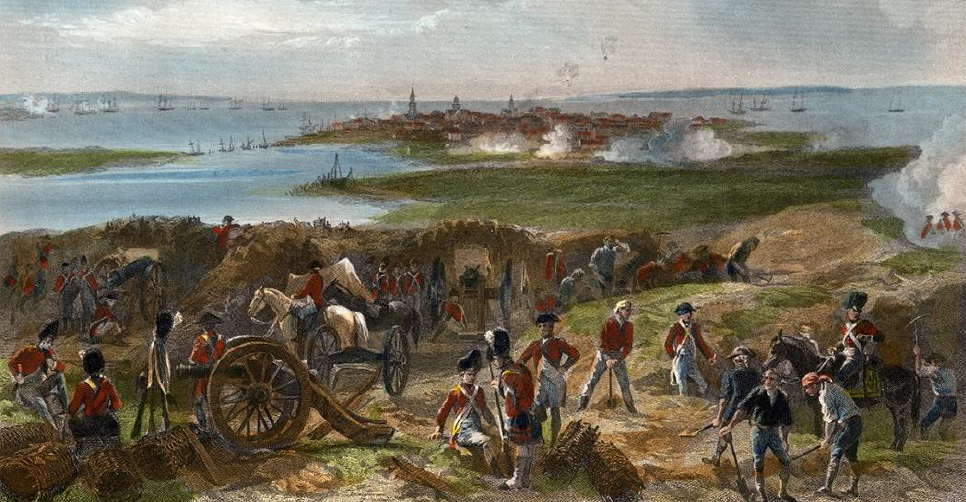When we think of the American Revolution, we often picture George Washington crossing the Delaware or the signing of the Declaration of Independence. But the war’s southern theater, often overlooked, was just as dramatic—and just as crucial to the eventual American victory. This is the story of how Washington’s trusted generals, Nathanael Greene and the Marquis de Lafayette, faced off against British heavyweights like Charles Cornwallis and the infamous traitor Benedict Arnold in a desperate struggle for control of the South.

The Southern Strategy: Britain’s Last Gamble
By 1780, the British had shifted their focus to the southern colonies, hoping to rally Loyalist support and crush the rebellion from below. Under the command of General Charles Cornwallis, British forces scored a series of early victories, capturing key cities like Charleston, South Carolina, and Camden. The American cause in the South seemed all but lost.
But the British had underestimated the resilience of the southern patriots—and the strategic genius of Washington’s generals. Enter Nathanael Greene, the man Washington called “the most capable officer in the Continental Army.”
Nathanael Greene: The Reluctant Hero
Nathanael Greene was an unlikely war hero. A Quaker from Rhode Island, Greene had no formal military training before the war. But his keen intellect, organizational skills, and unwavering loyalty to Washington made him one of the revolution’s most effective leaders. When Congress appointed Greene to command the Southern Department in late 1780, he faced a daunting task: rebuild a shattered army and take on Cornwallis, one of Britain’s most experienced generals.
Greene’s strategy was unconventional. Instead of engaging Cornwallis in direct combat, he adopted a “war of posts” approach, using hit-and-run tactics to wear down the British. As Greene famously put it, “We fight, get beat, rise, and fight again.” This strategy kept Cornwallis on the defensive and bought time for Greene to rebuild his forces.
The Marquis de Lafayette: The Boy General Takes on Arnold
While Greene was busy outmaneuvering Cornwallis, another of Washington’s protégés was making a name for himself in Virginia. The Marquis de Lafayette, a 23-year-old French aristocrat, had become one of Washington’s most trusted aides. In 1781, Washington sent Lafayette to Virginia to counter the threat posed by Benedict Arnold, who had defected to the British and was now leading raids against his former comrades.
Lafayette’s mission was daunting. He was young, inexperienced, and vastly outnumbered by Arnold’s forces. But Lafayette proved to be a quick learner and a natural leader. Using guerrilla tactics and his knowledge of the terrain, Lafayette managed to keep Arnold at bay, preventing the traitor from gaining a foothold in Virginia.
The Tide Turns: From Defeat to Victory
Greene’s and Lafayette’s efforts began to pay off in early 1781. Greene’s forces scored a series of small but significant victories, including the Battle of Cowpens in January, where American troops under Daniel Morgan decisively defeated a British detachment. These victories boosted morale and demonstrated that the Americans could hold their own against the British in the South.
Meanwhile, Lafayette’s persistence in Virginia forced Cornwallis to divert resources to the region, stretching British supply lines and weakening their overall position. By the summer of 1781, Cornwallis found himself trapped at Yorktown, Virginia, with his back to the sea and no way out.
The Siege of Yorktown: The Final Act
The stage was set for the war’s climactic battle. In September 1781, Washington, with the help of French forces under General Rochambeau, marched south to join Lafayette and Greene in besieging Cornwallis at Yorktown. The combined American and French forces, supported by the French navy, surrounded Cornwallis’s army and bombarded them into submission. On October 19, 1781, Cornwallis surrendered, effectively ending major combat operations in the war.
The Legacy of the Southern Campaign
The southern campaign was a turning point in the American Revolution. Greene’s and Lafayette’s efforts not only saved the South from British control but also set the stage for the decisive victory at Yorktown. Their success demonstrated the importance of adaptability, resilience, and leadership in the face of overwhelming odds.
Conclusion: Lessons for Today
The story of the southern campaign is a testament to the power of perseverance and strategic thinking. Greene and Lafayette, despite their youth and inexperience, rose to the occasion and helped secure American independence. Their legacy reminds us that even in the darkest times, determination and ingenuity can lead to victory.
So, the next time you’re facing a tough challenge, remember Nathanael Greene and the Marquis de Lafayette. If they could turn the tide of a revolution, surely you can overcome whatever obstacles come your way. After all, as Greene himself might say, “We fight, get beat, rise, and fight again.”

No comments yet.